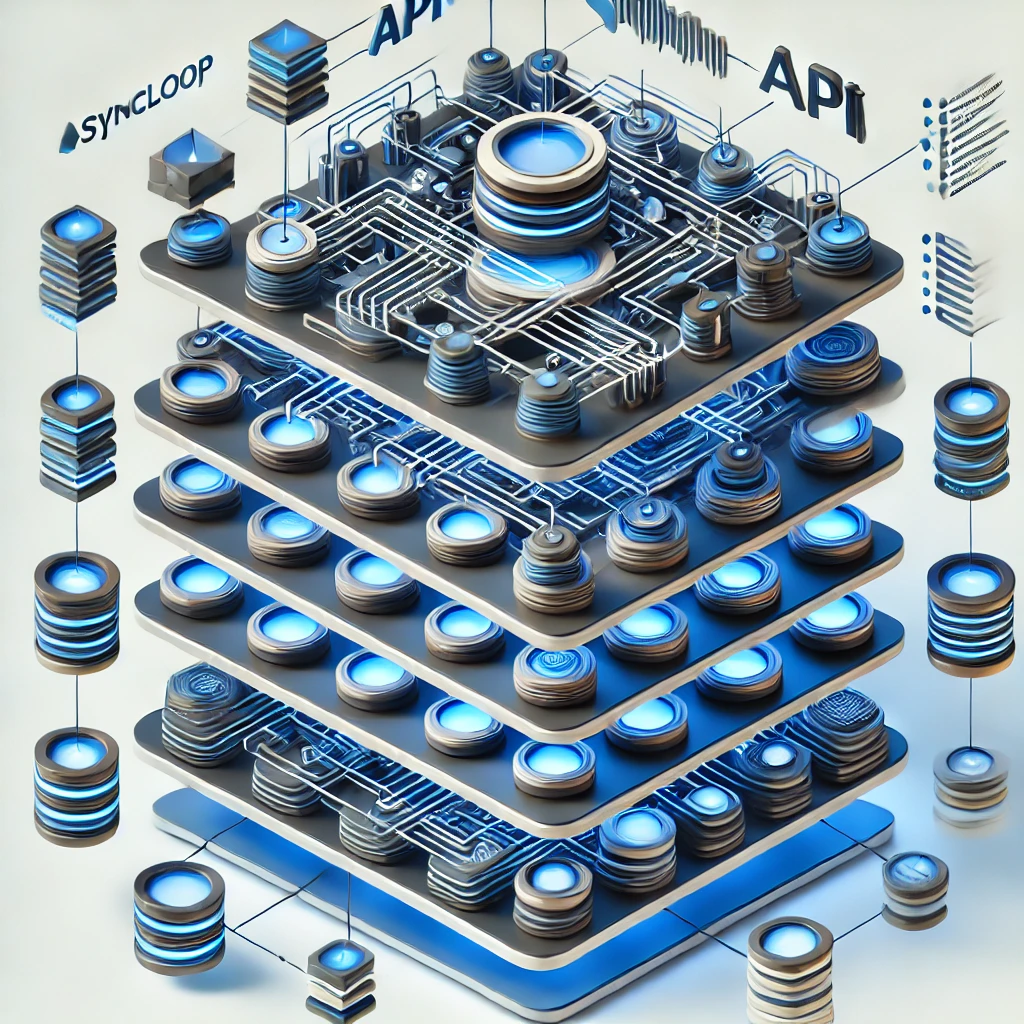Building Resilient API Gateways with Syncloop's Automation Features

Syncloop, a powerful API development platform, provides advanced automation features that enable developers to build resilient API gateways. This blog explores how Syncloop’s tools simplify the creation and management of robust gateways and highlights best practices for ensuring their reliability.
Why Resilient API Gateways Matter
API gateways are the backbone of communication between applications, and their resilience ensures:
- High Availability: Minimized downtime for uninterrupted application functionality.
- Scalability: Handling of high traffic volumes without performance degradation.
- Error Handling: Smooth management of failures, retries, and fallback mechanisms.
- Security: Protection against threats like DDoS attacks or unauthorized access.
- Efficient Load Distribution: Evenly distributing requests across backend services to optimize performance.
How Syncloop Enables Resilient API Gateways
Syncloop provides a range of automation tools and features to design and maintain API gateways effectively:
1. Dynamic Routing
Configure automated routing rules that adjust based on real-time conditions, ensuring requests reach the optimal backend services.
2. Load Balancing
Use Syncloop’s built-in load balancing tools to distribute traffic evenly across services, enhancing reliability and performance.
3. Rate Limiting and Throttling
Implement automated rate limiting to control traffic and prevent overloading of backend systems, ensuring consistent performance.
4. Circuit Breakers
Set up circuit breakers to detect and isolate failing services automatically, preventing cascading failures and preserving overall system health.
5. Retry and Fallback Mechanisms
Configure automated retries for transient errors and define fallback endpoints for continuous service availability during failures.
6. Real-Time Monitoring
Monitor gateway performance, traffic patterns, and error rates in real time with Syncloop’s analytics tools, enabling proactive issue resolution.
7. Security Automation
Leverage automated security measures like token validation, IP filtering, and request logging to protect the gateway from threats.
Benefits of Using Syncloop for API Gateways
1. Enhanced Resilience
Automated error handling, circuit breakers, and retries ensure seamless operation during failures or high demand.
2. Optimized Performance
Load balancing and dynamic routing improve response times and resource utilization.
3. Improved Scalability
Syncloop’s scalable architecture supports traffic growth without compromising reliability.
4. Simplified Management
Centralized tools and automation reduce the complexity of managing API gateways.
5. Robust Security
Automated security features protect against threats while ensuring compliance with industry standards.
Real-World Applications of Resilient Gateways with Syncloop
1. E-Commerce Platforms
Handle high traffic during sales events with automated load balancing, rate limiting, and fallback mechanisms.
2. SaaS Applications
Ensure uninterrupted access for multiple tenants with scalable and fault-tolerant API gateways.
3. Financial Services
Protect transaction APIs with automated security and prevent service disruptions with circuit breakers.
4. IoT Ecosystems
Manage device-to-cloud communication with dynamic routing and retry mechanisms for intermittent connectivity.
Best Practices for Building Resilient API Gateways with Syncloop
- Implement Load Balancing: Distribute traffic evenly across backend services to enhance scalability and reliability.
- Automate Error Handling: Use circuit breakers, retries, and fallbacks to handle service failures gracefully.
- Secure the Gateway: Enable automated authentication, rate limiting, and IP filtering to protect against threats.
- Monitor Continuously: Use Syncloop’s real-time monitoring tools to track gateway performance and detect anomalies.
- Optimize Routing Rules: Configure dynamic routing based on factors like load, latency, and service availability.
- Test Extensively: Simulate failure scenarios to validate the resilience of the API gateway under real-world conditions.
Conclusion
Building resilient API gateways is essential for ensuring high availability, performance, and security in modern applications. Syncloop’s automation features simplify the process, providing tools for load balancing, error handling, and real-time monitoring that enable developers to create robust and reliable gateways.
Whether you’re managing e-commerce traffic, SaaS integrations, or IoT communications, Syncloop empowers you to build API gateways that can handle dynamic demands and ensure seamless operation. Embrace Syncloop to drive resilience and reliability in your API ecosystem.
A conceptual illustration of a resilient API gateway powered by Syncloop, showcasing dynamic routing, load balancing, and automated error handling workflows.
Back to Blogs